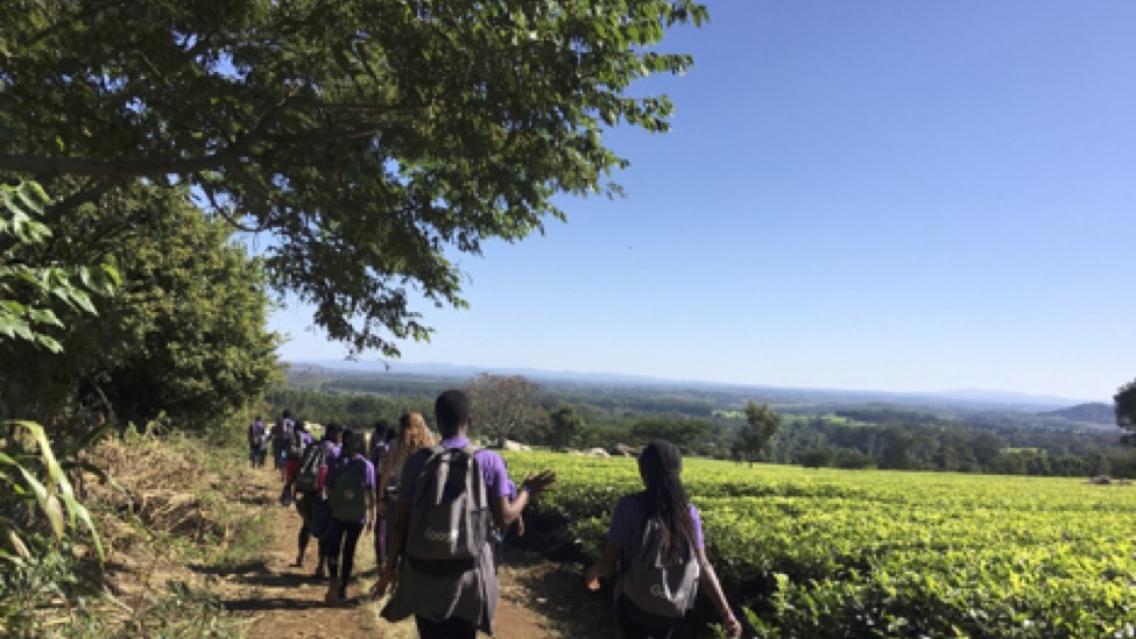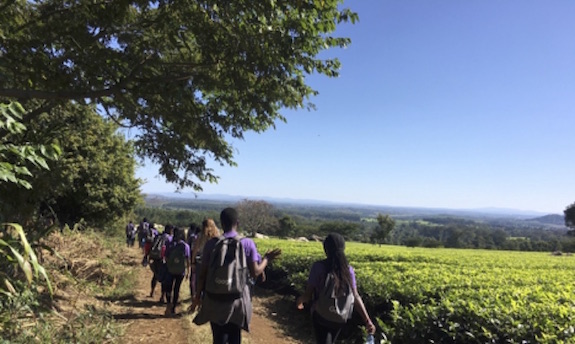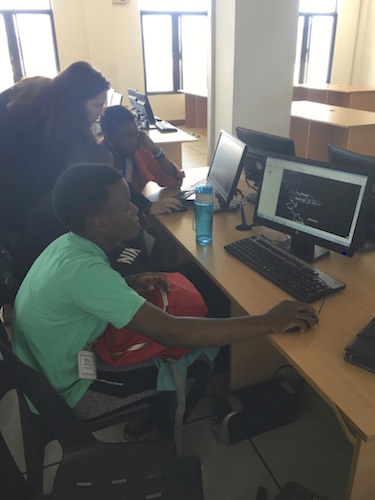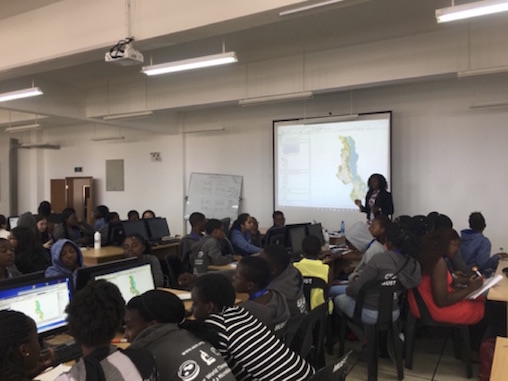Young Women Mapping our Changing World

 |
Worldwide there is a strong gender imbalance in women pursuing Science, Technology, Engineering, and Math (STEM) careers. Statistics show that 33.4% of university students pursuing STEM degrees are female, while the percentage of women in STEM careers is 12.3% of the total workforce1. Globally, women are underrepresented in high value added jobs in the STEM fields and are instead employed in lower skill, lower wage jobs and industries, despite representing about 40% of the global workforce2. In the United States alone, only 26% of STEM job opportunities are held by females3, despite women representing 50% of the total workforce.
To address these disparities, the U.S. Department of State partnered with organizations such as World Learning, Girl Up, Google, and Intel to support a Women in Science (WiSci) Science, Technology, Engineering, Arts, and Math (STEAM) Camp at the Malawi University of Science and Technology in Thyolo, Malawi. The camp, held July 30 through August 14, 2017, brought together 100 U.S. and East African high school aged women interested in pursuing STEAM careers to empower and inspire them to continue their STEAM educations.
 |
| Emily Adams showing camp participants how to interpret satellite imagery |
Emily Adams, Regional Science Associate for Eastern and Southern Africa, NASA SERVIR Science Coordination Office, and Phoebe Oduor, SERVIR Eastern and Southern Africa Land Use Land Cover & GHG Inventories Thematic Lead from the Regional Center of Mapping of Resources for Development (RCMRD), traveled to the event to teach the participants about SERVIR and how NASA uses Earth Observation data to ‘bring space to village’.
The lectures focused on understanding how we can use geospatial technology and satellite data to see the Earth from the unique vantage point of space, and how that facilitates a better understanding of agriculture, water resources, disasters, land use and land cover change, and other important applications. Several camp activities provided hands on experience with satellite data, and introduced the participants to creation of land cover maps derived from Earth observing satellites. A trip to the field to the Mulanje Mountain Forest Reserve and local tea plantations to use the Land Use Land Cover Mapper Mobile App (available on the Google Play Store) developed by RCMRD allowed the young women first-hand experience with the collection of ground observation points. These data points were then visualized in conjunction with the satellite data to better understand the relationship between satellite data and the ground.
“This was such a unique opportunity for these young women, Ms Oduor, and me to work together,” says Adams. “Most of these young women did not know that NASA studied the Earth, and we think a lot of them left the camp with a new understanding of Earth Science careers. I was incredibly inspired by their enthusiasm to learn more, and I look forward to seeing what the future holds for them.”
 |
| Phoebe Odour teaching camp participants about land cover maps derived from Earth observing satellites |
Notes:
1 https://stemgenderequality.com/worldwide-gender-equality-stands/

